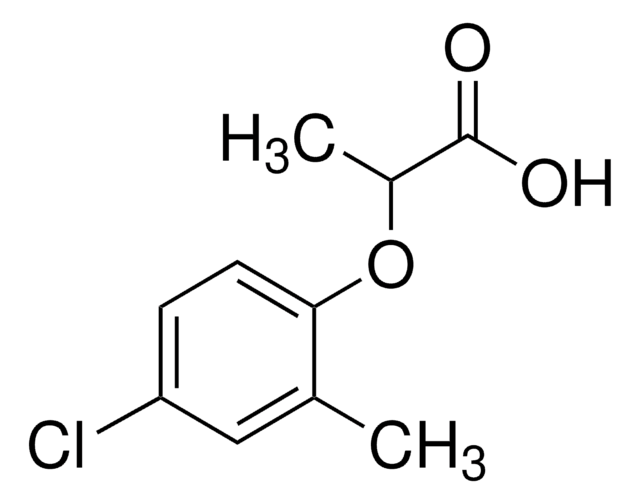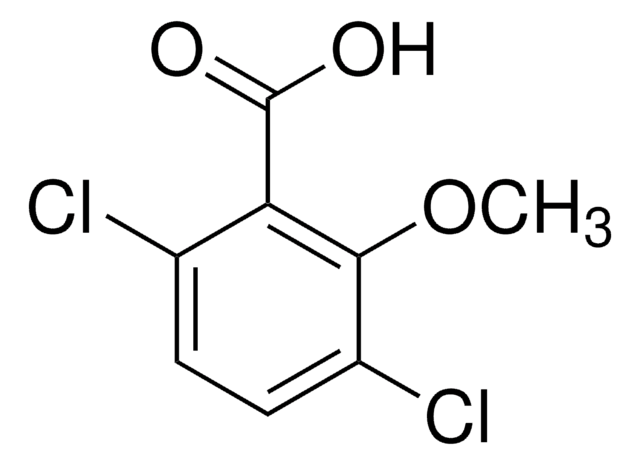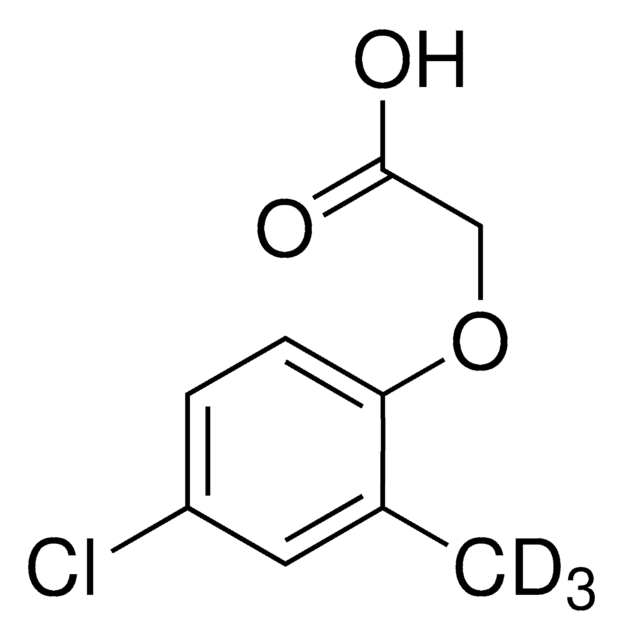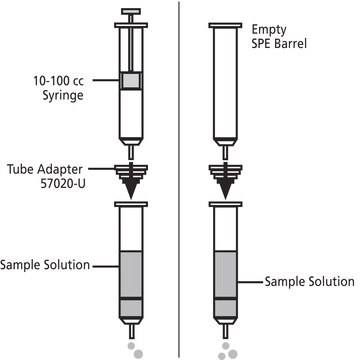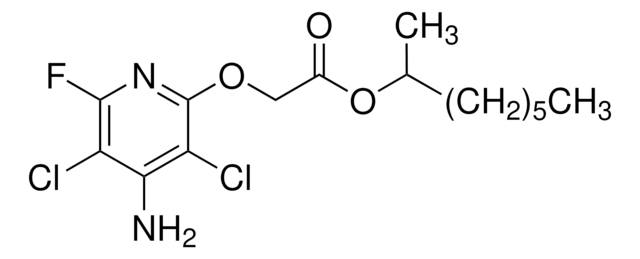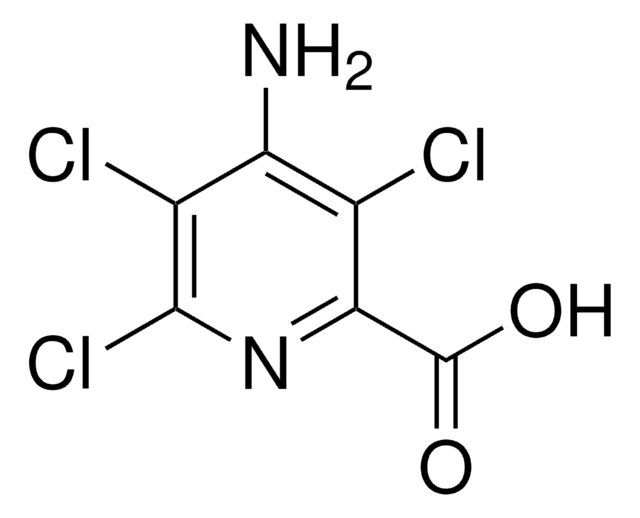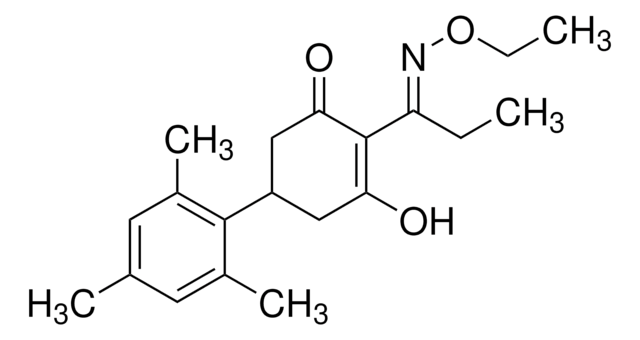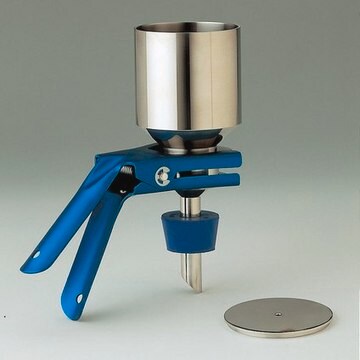36773
Mecoprop-P
PESTANAL®, analytical standard
Synonyme(s) :
(R)-2-(4-Chloro-2-methylphenoxy)propionic acid
About This Item
Produits recommandés
Qualité
analytical standard
Niveau de qualité
Gamme de produits
PESTANAL®
Durée de conservation
limited shelf life, expiry date on the label
Application(s)
agriculture
environmental
Format
neat
Chaîne SMILES
C[C@@H](Oc1ccc(Cl)cc1C)C(O)=O
InChI
1S/C10H11ClO3/c1-6-5-8(11)3-4-9(6)14-7(2)10(12)13/h3-5,7H,1-2H3,(H,12,13)/t7-/m1/s1
Clé InChI
WNTGYJSOUMFZEP-SSDOTTSWSA-N
Vous recherchez des produits similaires ? Visite Guide de comparaison des produits
Description générale
Mecoprop-P is approved for its use in the European Union. Maximum residue levels (MRLs) have been set according to Reg (EC) No 149/2008 for mecoprop-P as a sum of mecoprop-P and mecoprop expressed as mecoprop for various products of plant origin from 0.05 to 0.1 mg/kg.
Mecoprop-p was included in Annex I to Directive 91/414/EEC on 01 June 2004. It is listed as one of the active substances in Regulation (EU) No 686/2012 according to the renewal procedure of the approval of active substances submitted under Article 14 of Regulation (EC) No 1107/2009.
Application
- To investigate the relationships between soil depth, the biodegradation of mecoprop-p, and the copy number and diversity of the tfdA gene group
- Study of adsorption and desorption behavior of two phenoxyalkanoic acid herbicides in a Haplic Cambisol with tillage and grassland management using a batch equilibrium method
- To investigate the persistence of S-metalachlor, bentazon, isoproturon, and mecaprop-P in heavy metal contaminated soil before and after EDTA-based remediation
- To assess the effects of mecoprop, mecoprop-p, and their biodegradation compound 2-methyl-4-chlorophenol on two larval stages of Crassostrea gigas
- To study adsorption-desorption Nicosulfuron and the ionic pesticide Mecoprop-P on a calcined Mg-Al hydrotalcite (HT-500) in the presence and absence of various anions
Informations légales
Vous ne trouvez pas le bon produit ?
Essayez notre Outil de sélection de produits.
Mention d'avertissement
Danger
Mentions de danger
Conseils de prudence
Classification des risques
Acute Tox. 4 Oral - Aquatic Acute 1 - Aquatic Chronic 1 - Eye Dam. 1
Code de la classe de stockage
11 - Combustible Solids
Classe de danger pour l'eau (WGK)
WGK 2
Point d'éclair (°F)
Not applicable
Point d'éclair (°C)
Not applicable
Équipement de protection individuelle
dust mask type N95 (US), Eyeshields, Gloves
Faites votre choix parmi les versions les plus récentes :
Certificats d'analyse (COA)
Vous ne trouvez pas la bonne version ?
Si vous avez besoin d'une version particulière, vous pouvez rechercher un certificat spécifique par le numéro de lot.
Déjà en possession de ce produit ?
Retrouvez la documentation relative aux produits que vous avez récemment achetés dans la Bibliothèque de documents.
Notre équipe de scientifiques dispose d'une expérience dans tous les secteurs de la recherche, notamment en sciences de la vie, science des matériaux, synthèse chimique, chromatographie, analyse et dans de nombreux autres domaines..
Contacter notre Service technique